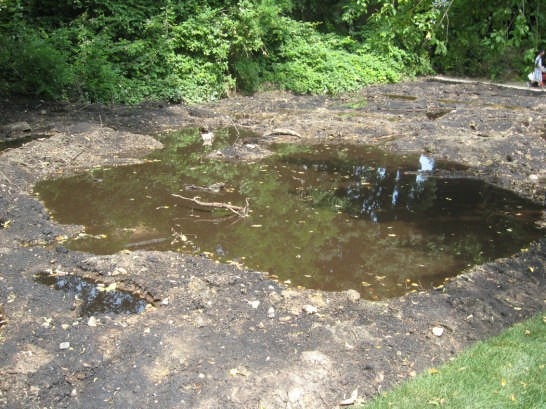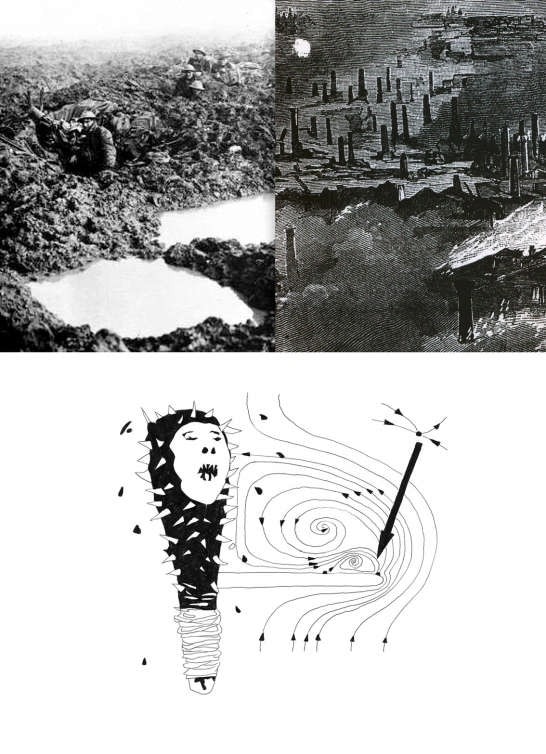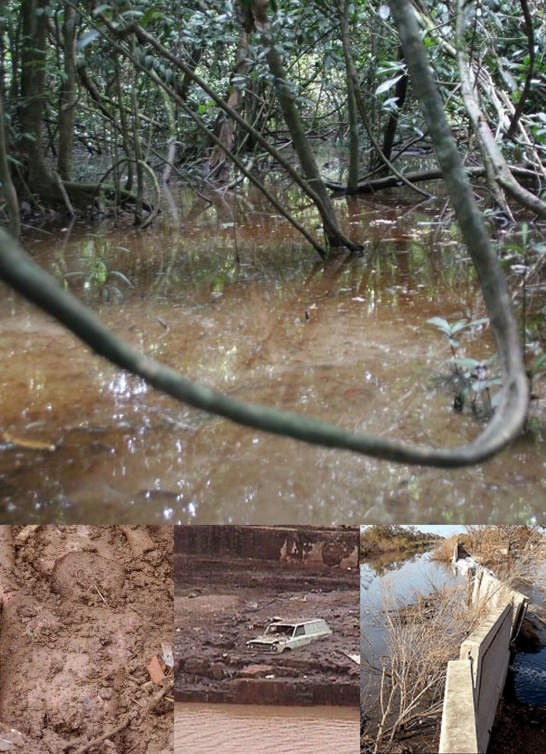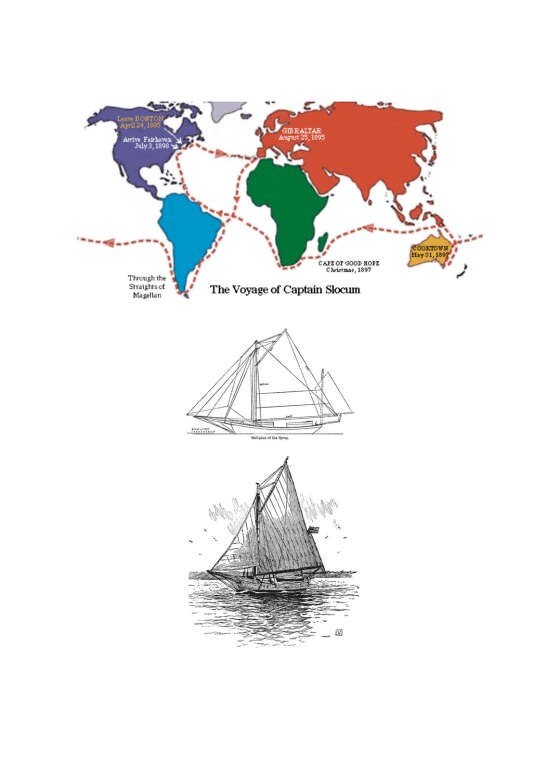These are clues that I find incomprehensible, and this is why I decide to describe only the image of my swamp. I can start by saying that it is an absent space, a place that works by subtraction, offering itself as a form immune to any model of compassion.
My swamp is not heroic, and it can be anything you want it to be.
?I find it is a place for fugitives. It is a hiding place.
The swamp is simple: it is a place of decomposition that constantly comes together only to decompose infinitely. It consumes all it swallows, offering itself as a place of hope and disgust. The swamp appears to be close, at times metallic and geometrical in a sign of catastrophe, at times soft, in a sign of peace. It is capable of hostility, but with credible innocence.
The swamp is a state of observation that bestows no great satisfaction. The vision of the swamp might be hypnotised due to the dearth of events that its visual impact has to offer. Or it may be expressionless as a result of the inevitable melancholy it arouses. All remains in silence, with little power of movement.
?The swamp constitutes a state of frustration and conflict between being a friendly and attractive place on the one hand, and an impenetrable and indifferent one on the other. A place that is rebellious, mute, and unwittingly corrupt and intolerant.
It is an expanse of dead waters, where sleep returns to restore a dream capable of prompting the enticement and hypnotism that lead to hallucinations and apparitions.
The swamp is slow, patient and repetitive. It is a turbid landscape that changes and evolves while always remaining the same.
It is torn between the pathetic and tragic in search of new feeling, and the impenetrable and mute in search of an experience to act upon reality. It is a form of dementia viewed as a language that investigates the sentimental.
It may be a moment of error or horror that might disorient or dazzle. The swamp might be an accumulation of what is possible, leaving traces in a space without signs, deep in warlike, riotous candour.
It may be a magical place, a place of possible misunderstanding that might turn into the garden of a royal palace or into a volcano in the midst of a desert of water, drawing from it an equation that relates the swamp and volcano to the mud and ash.
Or the swamp might be disposed to lie to itself like a cemetery. A landscape that is a treasure trove of empty tombs, where the buried and the deceased remain without name, surviving in a symbiosis of mystery and desire, of salvation and perdition, of refuge and resignation. They are burials that raise doubts and make one wonder if some of them have suffered a non-death, continuing to live in peace. The swamp might be a cemetery in which the deceased grow old with their own inventions, protecting their dreams. It is a storeroom of desires.
The swamp will be a landscape trodden down by an army defeated by an inherited, ageless beauty, and it will be anchored in its majestic nature, pleading for a miracle.
It is the well-hole of the insane, the underground or almost submerged cemetery. It shows it cannot tolerate captions, declaring itself to be an archive of documents written in characters so obscure as to resemble scribbles.
It will be a deposit for the syntheses that reinvent another equally impenetrable landscape, where tombstones will acquire the most unforeseen shapes. Hybrid forms. Alien objects that give us the illusion they are forms that have arisen in their entirety. They will appear like spontaneous entities created by the subterranean world, the existence of which can only be surmised, as though they had been grown into that shape.
They will be alien objects forced into their assigned place, held up by the slime that will save them from their slow subsidence and disappearance, only to appear again, opposing the fatality of their own downfall. It will be like watching a struggle between the object and the swamp, where attrition will form between the desire to resist and an inevitable abandonment that produces a minimal perception of movement or the chance of deadlock. A state of frustration and tension, which will relate the two entities to each other, modifying the weaker and reducing it to a “consumer item”. One that will resist carelessness by letting itself fall into ruin until it becomes an everyday object, and thus unique.
This is also a pretext for creating tensions which, as well as finding space by resisting a state of powerlessness, also investigate why an inert object that survives solitude should move us, observing how an object that takes shape within the unawareness of a simple man can move us, and attempting to understand how a flow of concrete can hypnotise.
Making a swamp is an invitation not to give in to dreams, but to believe in prodigies, remaining sceptical of any drastic and definitive conclusion and, in the drafting of an imaginary globe, sharing a mental landscape while waiting for it to become real.
The swamp is the creation of another celibate machine that, in itself, has no raison d’être. A cog wheel that sterilises the physical element and captures the mental, overturning functions and paralysing perceptions in an underhand game at the mercy of a single variable: artifice.
The immersed objects will resemble “things” captured for this world, showing themselves to be imprisoned and rigidly isolated like pieces of cut marble waiting to be decayed by water and mud.
The interaction between the object and the swamp will make use of dexterity, never to be revealed, and capable of triggering an emotive reaction that will, however, end up in melancholy.
It is a device that will appear as a construction governed by the laws of physical mechanics and social utility, which will be converted into the mental laws of subjectivity.
The swamp will be a mechanism designed to remain independent and inaccessible. This frustration will transform a hostile machine into an impossible device.
The immersed object will be a construction made to rebel against its own destiny, revealing itself as an outcast that brings about negotiation through astonishment and wonder. The object will live in the swamp, and living there will help it show off its haughty decadence.
The object will be a device that seeks refuge in a mimetic world: the swamp. The swamp will find hospitality in an artificial surface of level ground: a garden. The garden will be a protected, decorated space: a landscape. The landscape will be the casing around the tomb that protects a subsurface: the monastery. The monastery will help produce mystery: a spectre.











